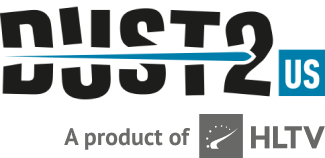
Guest Article: muenster details the scouting process
This is a guest article written by Joseph "muenster" Lima, former coach of Party Astronauts, Evil Geniuses, and EG Gold.
Building a team in Counter-Strike isn't always as simple as it might seem on the surface. For fans, there's usually very little insight into the process of selecting a player. The only tools available to the public for evaluating player performance are HLTV stats, the eye-test, and an occasional short interview with some kind of testimonial from former or current teammates.
It's extremely rare to get any kind of insight into the scouting process from teams, general managers or coaches. Unless it's a superstar-type player, it's difficult for fans to fully understand a player's value as a teammate or their impact in a team. Most professional players also don't spend much time on social media or creating content, so fans are left speculating about their personality from what they see in very quick pre- and post-game segments, which can often be uncomfortable and awkward.

Scouting is much more than just reviewing stats, checking which teams they previously played on, and picking the best available on paper. The process varies at all levels and isn't so straightforward. There's a lot of behind-the-scenes work that goes into finding the right player for a team. For example, at lower levels where the competition isn't as serious, a team might spend a day or two to round out a roster so they can be registered in time for the next season of Intermediate, but in tier one the process might take a month of work between three or more people while working within a certain budget to find the best possible fit. There's much more risk involved in the latter, so the process of picking a player is usually taken much more seriously.
The ultimate goal with scouting is to build a cohesive team both in and out of the game. Personality, motivation, work ethic, strengths and weaknesses, and individual goals are equally as important as a player's mechanical ability, but public statistics tell us nothing about those qualities. Therefore, managers and coaches must employ a variety of techniques to grasp the potential value a player might have for their team.
The process starts far before looking for replacements
Before even looking at options for new players, a GM or coach needs to identify the problem they're attempting to solve within their roster, which means evaluating the team internally first and foremost. This step usually happens before a player is removed, but depending on the circumstances and/or recent performance of the team, might also happen again after a removal.
This is where a coach might consider either maintaining or changing the system and playstyle of the team. If they make the call to keep the current structure, then the next step would be to find a player to slot into the removed player's roles and positions as one-for-one as possible. If adjustments to the structure are desired, then more questions need to be asked and answered to create an outline for the type of player that would best fit into the new version of the team.
Some useful questions are:
-
What new style do we want to play?
-
What roles in the new style can we fill with the players we have?
-
What gaps are left?
-
What type of player would best fill those gaps?
It's almost like player customization in FIFA, 2K, or Madden where you pick and choose stats to create the best player for your team, the difference being that this created player would only serve as the best possible scenario rather than the exact player they ultimately get. For example, do they want a player who is vocal and calls his own shots, or a passive soldier who follows orders?
Matching this outline to a player exactly is almost always impossible and anyone that might fit it perfectly is usually already signed to a team they don't want to leave. That's why rather than using the outline as the requirement, the outline is used as a comparative tool. Now this is the point where stats and experience come into play.
Stats are useful, but limiting
Stats are not a perfect metric for player ability, but depending on the role it can be a very useful filter that will give a general manager and head coach an initial pool of names to begin researching. Players don't get signed simply for having a high rating in the last 6 months on HLTV, but a high rating could indicate that they have more value as a player other than mechanics, such as usefully calling utility or communicating reads. It's on the managers and coaching staff to figure out what that added value is.
You can't see if a player is an effective communicator or has a strong work ethic by watching their demos, so how do GMs and coaches learn that about the players they're scouting? Just like when looking for any other job, they utilize both Q&A and practical interviews, though usually with a less formal approach.
The best way to learn about someone as a person is to ask them directly and the best way to know how good they might be at something is to have them demonstrate that skill for you. In Counter-Strike, a GM or head coach might speak with a player a handful of times through messages or calls to get a comprehensive understanding of how they work, think, and act. Then, depending on how closely they match the culture of the team, they'll schedule the player for trial scrims to test their abilities in-game and see exactly how they mesh with the rest of the team.
Trials and tribulations (but mostly trials)
When trialing a player, Coaches often want to test their problem solving abilities, so they will purposefully leave out specifics about what they're evaluating them on. At most, a coach might explain their positions and role they want to fill, then give a very simple rundown of the team's playstyle and watch their POV to see how they fill in the gaps and interact with the other players.
Since coaches can easily get an idea of a player's mechanical ability from watching their recent demos. During trials, they'll mostly be assessing the way they communicate ideas before and during scrims, the way they assist their teammates with ideas that aren't their own, the way they express themselves to failed ideas and in-game deaths, the way they react when someone pushes back or denies their ideas, and other examples of interpersonal interaction and game knowledge.
This is where having a "perfect player" already outlined comes in handy. Once the player has completed a round of trial scrims, which could be anywhere between five to fifteen games, and have been evaluated by the coaches and/or GMs, a conversation can be had about how close that player is to their idea of what's best for the team. Teams with multiple potential candidates might do multiple rounds of this process to gather more data and narrow down their list to two or three players they feel would be most valuable to creating a cohesive and successful roster. A few more coaching staff and team meetings later, they'll have a ranked candidate list which they can go down and conduct negotiations with. After a week or two of contract discussions, the chosen player should be signed.
There is no such thing as a perfect player or a perfect fit, but through hard work and proper scouting, head coaches and GMs can often get extremely close. So many factors go into determining a player's total value. It's never as simple as picking the best statistical player from the list of free agents or buying the current best players from the top teams. The higher up in professional tiers you go, the more lengthy of a process it becomes. So the next time a professional team announces a new player, you can imagine all the areas they had to prove themselves in before getting the call.
Also read



























